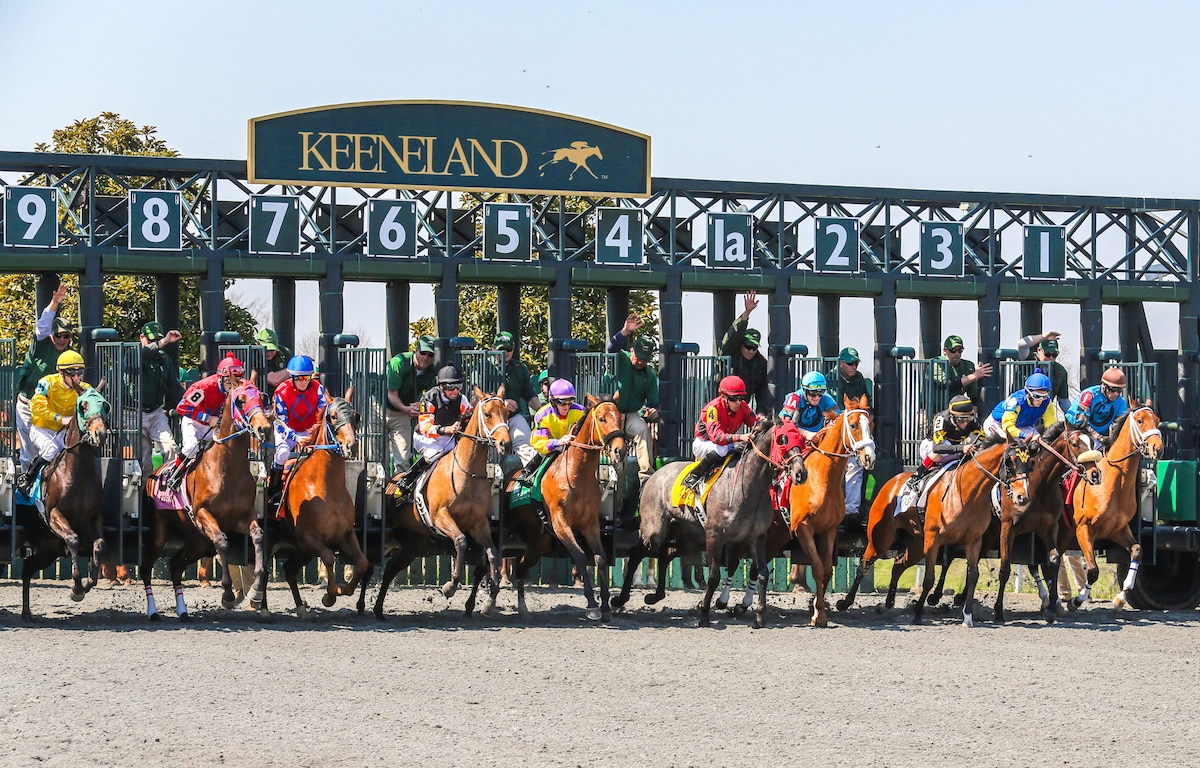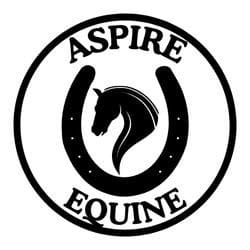Breaking from a starting gate doesn’t come naturally to a horse; learn how trainers teach their young Thoroughbreds this unique skill safely and effectively

The excitement of horses breaking from the gate is the product of repeated training starting at an early age. Courtesy Kevin Thompson/The Horse Staff
The starting gate is an iconic symbol of horse racing — the bell clanging, the doors springing open, and the horses surging forward as the race begins. The process appears seamlessly orchestrated, but it takes a lot of effort to get the contenders to this point. Just as anyone who has ever tried to get an untrained horse into a trailer knows, horses don’t automatically walk into tight, enclosed spaces.
All racehorses must be gate-trained before they can start in a race. Racing rules throughout the country require horses to go through an approval process to ensure they can break from the gate safely and efficiently. A horse that refuses to go into the starting gate can pose a danger to himself, his jockey, other horses and riders and the gate crew, in addition to delaying the start of a race.
How does a horse learn to walk into a starting gate calmly and leave it at a gallop? As with any training regimen, the process works best when started slowly, allowing a horse to master each step along the way.
“Horses are usually introduced to the gate very early,” says trainer Matt Chew. “We like to have it done at the farm before they’re 2 years of age.”
Chew trains a stable of Thoroughbreds at Southern California racetracks and once worked on a starting gate crew. He and his wife, Candace, who is the head of graphics at Santa Anita Park, also retrain some of Chew’s racehorses for second careers. They have even worked with horses for various movie and television projects, including the film “Seabiscuit.”
“The process starts with a simple walk-through,” Chew says.
Unlike a horse trailer, which is enclosed, a starting gate’s stalls can be open in both the front and back. With everything open, the horse is simply walking through a tight space. The rider and the person leading the horse offer pats and encouragement to coax him through with very little drama.
Chew explains that farm personnel might walk the horse through the gate at the beginning of the animal’s daily training routine, segueing seamlessly into whatever galloping or jogging exercise is scheduled for that day.
“It gets them used to touching the sides of the gate,” says Chew.
For safety, each gate stall is well-padded, sometimes including bumpers (also called boxes) on each side, which might startle a horse as he brushes against them for the first time. The stalls have ledges on either side, as well, where an assistant starter will stand next to the horse during actual racing conditions, restricting the space even further.
Another advantage to introducing horses to the gate when they’re young and before they start real race training is that they haven’t yet reached optimum fitness. Literally less “on the muscle,” they aren’t as likely to resist going through a gate, says Chew.
“One of the worst things you can do is wait until a horse is fit before introducing him to the gate,” says Chew. “They’re stronger and more keyed up.”
Much of gate training involves desensitizing the horse to the new environment, much like training situations in other disciplines. Taking it slow, especially with a fearful horse, and repeating any lesson as needed can head off trouble later.
“You can never overdo gate training,” says Chew. “It takes only a few seconds to get one scared, and that can take weeks to undo.”
During the gate training process, everyone who works with the horse should be calm and relaxed. The horse will pick up on that calm and learn not to fear the gate. If a rider fears the gate, the horse probably will, too.
Jay Slender, Santa Anita’s starter, spends many mornings at the track schooling horses in the gate. “If they get scared when they’re young, it takes a lot longer to get them over it,” Slender says, though he notes that they’re all different. “Some get over it quick, and others take longer.”
After a horse walks through the gate calmly and consistently, it’s time to show him how to stand in it with the front and rear doors closed. People working on the ground with the horse close the doors quietly and let the horse get used to these new circumstances.
The amount of time needed for this process varies, depending on how the horse reacts to the enclosed space. A good gate crew that can read a horse’s body language makes a huge difference, opening the doors before the horse becomes upset and reassuring him that he doesn’t need to be scared. With repetition, the horse should eventually learn to stand in the gate quietly.
“Once the horse is comfortable in the gate just standing there,” says Chew, “then we’ll open up the front of the gate by hand slowly and get him used to walking out.” Again, he notes, the biggest problem is having something go wrong early in the training so that the horse becomes afraid.
Farm personnel might not take gate training further than this step. Once the horse is shipped to the track, the trainer and the track gate crew can teach the horse to break from the gate at speed.
Training gates typically have only four stalls, while the starting gates used in races might have 10 to 14. At Santa Anita, Slender and his crew use both a training gate and a bigger race-sized gate when acclimating newcomers.
“When they get here, it’s a whole different world,” says Slender. “There’s a lot more activity going on, and this is a bigger gate.”
The next steps involve teaching the horse to break out of the gate when the starter rings the bell and opens the doors.
“We don’t put a ton of pressure on them the first time we do that,” says Chew. “We let them ease into it. After two or three times, the horse gets the idea about leaving there faster.”
Chew puts a more experienced horse in the next stall, letting the veteran teach the youngster what to do.
“It’s amazing how quickly they pick it up,” says Chew. “Usually, after two or three times breaking with another horse, they’ve got it.”
The rider plays an integral role at this stage. Chew says that when asking a horse to walk out of the gate, the rider should be more relaxed than when breaking out of the gate at speed.
“When the horse is getting ready to break, the rider will pick the horse’s head up a little more and get him focused,” Chew says. “The horse can feel that the rider is more intense. The communication between horse and rider in any discipline can’t be overstated.”
Out of necessity, gate retraining happens regularly. If a horse acts badly at the starting gate before a race, Slender puts him on the starter’s list. That means the horse cannot race again until he undergoes training with the gate crew.
If a trainer lays a good foundation of gate training, it’s likely that the horse will not only race better but also be a better candidate for a second career.
“Horses well-trained in the gate will usually load in a trailer well,” says Chew. “They don’t mind being in close spaces. They’re used to having people up high near their head, and they’re used to activity going on around them in the form of horses acting up. It desensitizes them to a lot of real-world environments.”
This article was originally published in the Spring 2016 issue of Off-Track Thoroughbred Magazine, the only publication dedicated to the Thoroughbred ex-racehorse in second careers. Want four information-packed issues a year delivered to your door or your favorite digital device? Subscribe now!

